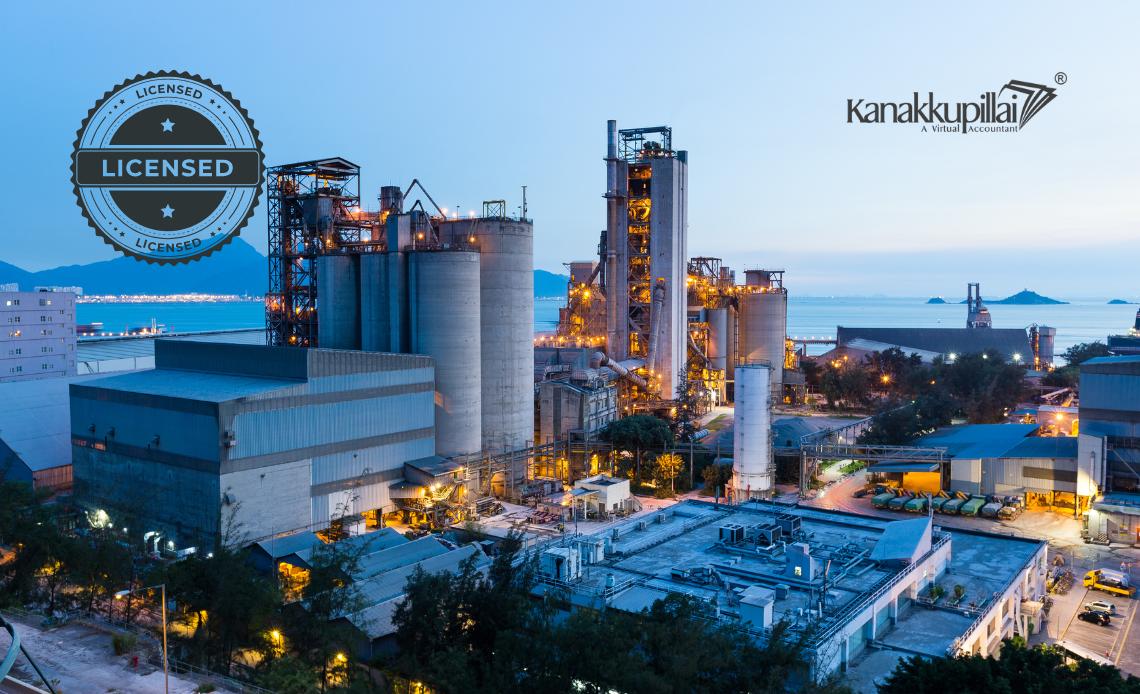Before the enactment of the Factories Act in 1948, Indian workers were unprotected from workplace hazards. The first Factories Act, 1881, brought by the Britishers, was not comprehensive enough to be uniformly enforced across all industries. Over the years, the Factories Act of 1948 has been amended several times to address evolving industrial challenges and adapt to technological advancements. Its primary objectives were to ensure the safety, health, and welfare of factory workers; regulate working hours, leave, and overtime to enhance work-life quality; set standards for industrial hygiene, ventilation, and sanitation; prevent accidents through proper machine safety measures; and promote overall industrial efficiency. A factory license is an official authorization that a manufacturing unit complies with all the statutory safety, health, and operational standards outlined in the Factories Act, 1948. The state authorities issue the license after a detailed review of documentation and a thorough on-site inspection.
In this blog, we will discuss the License under the Factories Act, 1948, its eligibility, required documents, and registration process in detail.
Who is Covered under the Factories Act, 1948?
The Factories Act, 1948, applies to any establishment where manufacturing processes are being carried out, specifically:
- If a factory employs 10 or more workers, power (electricity or any other form) is used to carry out manufacturing.
- If a factory employs 20 or more workers, it is required to use power in the manufacturing process.
Eligibility Criteria for a Factory License
To be eligible for obtaining a factory license under the Factories Act, 1948, the establishment must meet the following conditions:
- The factory must be manufacturing, processing, or any industrial activity as defined under the Factories Act, 1948.
- If the manufacturing process involves the use of power such as electricity, then the factory must employ a minimum of 10 workers (either currently employed or those who have worked on any day within the previous 12 months).
- If the factory carries out the manufacturing process without using power, then there must be a minimum of 20 workers.
- The premises must be located in an area authorized for industrial use and comply with local zoning laws.
- The facility must be ready for industrial operations; it must have an approved layout plan and adequate infrastructure and must strictly adhere to the safety standards and norms.
Documents Required for Applying for a Factory License
You need the following documents to apply for a factory license:
- Application form, Form No. 2 or 1AA
- Construction Completion or Occupancy Certificate
- Board resolution or business incorporation certificate, partnership deed
- PAN Card copy of the business
- Tax receipts in the name of business
- Blueprints showing the factory’s layout, including production areas, storage, emergency exits, and facilities such as washrooms and canteens, if applicable.
- Proof of payment of the application fee.
- No Objection Certificate (NOC) from the Fire Department, Pollution Control Board, Water Supply, and Other Local Authorities
- A certificate issued by a qualified chartered engineer or architect that confirms the structural stability and integrity of the factory premises.
- A board resolution (in the case of a company) or a declaration by the proprietor (for proprietorship concerns) that designates an individual to act as the occupier of the factory.
- Policy outlining the measures implemented to ensure the safety, hygiene, and welfare of the workers within the factory.
- Additional documents such as machinery & equipment details, raw materials & inventory data.
Process for Obtaining a Factory License
Step 1: Notification to the Chief Inspector
Before beginning the manufacturing process, the occupier/owner of the factory has to send a written notice under Section 7 of the Factories Act, 1948. The notice must be provided to the Chief Inspector at least 15 days before the actual use of the factory premises. The following details must be included in the notice:
- The name and address of the occupier/owner
- The name and location of the factory.
- Details of the manufacturing process.
- The name and contact details of the factory manager.
- The expected number of workers.
- The total rated horsepower is installed or planned.
- Any other additional particulars as prescribed under the Factories Act, 1948
Step 2: Site Inspection
Once the notice is served, the regulatory authority will schedule an inspection of the factory premises. The inspector will assess the factory layout and verify the presence of necessary safety installations. If the inspector finds any shortcomings during the inspection, the applicant will be provided an opportunity to correct them before the license is issued.
Step 3: Pay the Fees
After the inspection, the applicant is required to pay the licensing fee. The fee varies from state to state based on the business’s operations, installed power capacity, and the number of workers in the factory.
Step 4: License Issued
Upon verification, the regulatory authority approves and issues the factory license, which is valid for one to five years.
NOTE: According to Section 6(3) of the Factories Act, 1948, if the State Government or the Chief Inspector denies permission for the site, construction, or extension of a factory or refuses registration and licensing, the applicant has the right to appeal. If the State Government issued the refusal, the appeal should be made to the Central Government. In cases where the refusal originated from the Chief Inspector, the appeal lies with the State Government. This appeal must be filed within thirty days from the date of such refusal.
Renewal of License
Factory licenses are not permanent. They require periodic renewals. To renew your factory license, follow the following steps:
- Fill and resubmit Form No.2 along with any additional documents
- Pay the licensing fee
- The licensing authority will conduct another round of inspections on the premises.
- Upon a successful review, the renewed factory license is issued for the next period.
Penalties for Not Obtaining a Factory License Under the Factories Act, 1948
If a factory operates without a valid license, the occupier and the responsible manager may face imprisonment for up to two years and a fine of ₹1,00,000. If the violation persists after the initial notice, a daily fine may be imposed.
Operating without a license attracts fines and imprisonment and may also lead to regulatory authorities shutting down the factory. This can result in loss of business, reputational damage, and barriers to obtaining future licenses or government incentives.
Checklist
- Verify that the manufacturing establishment employs the minimum required number of employees.
- Make sure that the premises are located in an area designated for industrial use.
- Prepare an approved factory layout plan.
- Complete the prescribed application form (Form No. 2 or 1AA) along with all supporting documentation.
- Obtain a Construction Completion or Occupancy Certificate.
- Secure No Objection Certificates (NOCs) from relevant authorities.
- Obtain a structural stability certificate issued by a qualified engineer or architect.
- Send a written notice to the Chief Inspector at least 15 days before commencing operations.
- Pay the licensing fee as determined by state-specific criteria.
- File an appeal within 30 days if the State or Chief Inspector refuses the application.
- Renew the license periodically by resubmitting updated documentation.
Conclusion
The Registration and Licensing of Factories under the Factories Act, 1948, is an important regulatory process to ensure the safety, health, and welfare of workers. It is a commitment to create a safe and work-friendly environment for the workers. The factories engaged in the manufacturing or power supply work have to obtain a license from the relevant state authority. Some states provide an online process for obtaining a license via the labour department website. In some states, the application for factory registration and license can be filed on the Department of Factories website. Operating a business without obtaining a license can result in the imposition of heavy fines and imprisonment. Therefore, stay compliant with the new rules and regulations to prepare for the challenges of tomorrow.
Related Services
Frequently Asked Questions
1. What is the purpose of a factory license?
It certifies that a manufacturing unit meets statutory health, safety, and operational standards, ensuring a secure workplace and legal operation.
2. Who must obtain a factory license?
Any facility engaged in manufacturing that employs at least 10 workers when power is used, or 20 when no power is used, must secure a license.
3. How does prior notification to the Chief Inspector work?
The factory owner must send a written notice to the Chief Inspector at least 15 days before starting operations, which triggers a mandatory site inspection.
4. What key documents are needed for the application?
The completed application form, occupancy certificate, detailed factory blueprints, proof of fee payment, necessary NOCs, an engineer’s stability certificate, and a board resolution or declaration by the business entity.
5. What happens during the site inspection?
An inspector visits the facility to verify safety measures, layout approval, and compliance with health standards. Any deficiencies must be corrected before the license is granted.
6. How is the licensing fee determined?
Fees depend on factors such as installed power capacity and the number of workers; late payments may incur additional surcharges.
7. What options exist if a license application is refused?
The applicant may file an appeal within 30 days. If the Chief Inspector refuses the license, the appeal goes to the State Government. If it is by the State Government, it goes to the Central Government.
8. What are the consequences of operating without a factory license?
Operating a business without a license can result in up to two years of imprisonment, fines up to ₹1,00,000, additional daily fines for ongoing non-compliance, and potential shutdown of operations.
9. How does a valid license benefit a factory beyond legal compliance?
A valid license boosts investor and employee confidence, supports smoother operations, opens up eligibility for government incentives, and enhances the factory’s market reputation.





